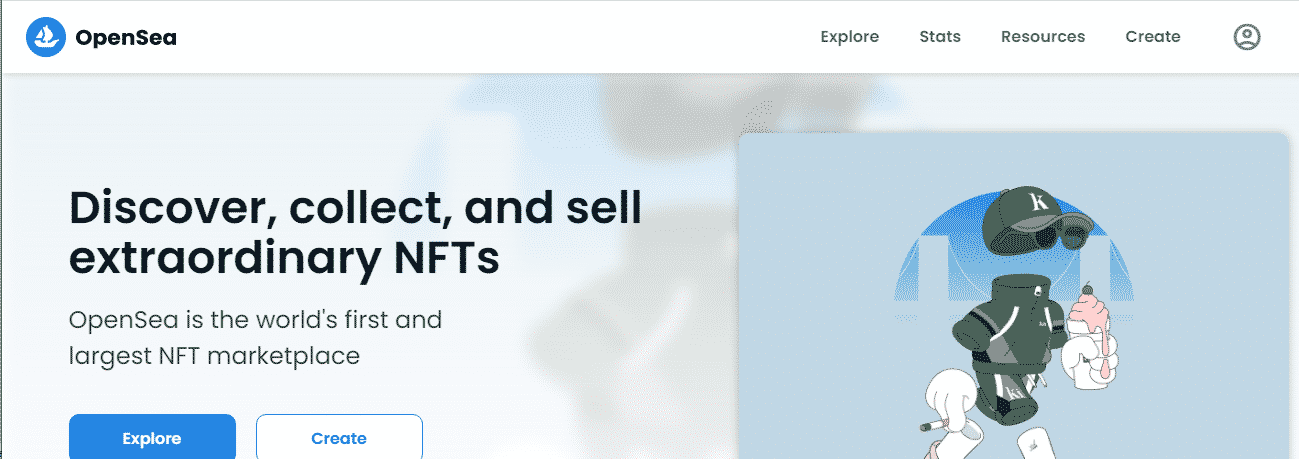As a major advantage, NFTs allow investors to buy into a collection as soon as possible. If the NFT collection rises in value in secondary NFT marketplaces like OpenSea, they have the highest chance of making a profit. NFT minting is the surest way to store data on the blockchain permanently. The minting procedure and its significance of it are described in the following sections.
How minting works

By minting an NFT, you’re securing a place on the blockchain for a particular item in an irreversible way. It could be an asset that you can convert into digital format-a painting, an image, or music. After minting, an NFT can no longer be altered in any way, and it then becomes an asset that a collector can own and sell to another buyer.
To create an NFT, you must upload the artwork that will represent the token, provide it with metadata, and pay the transaction fees. Because the NFT keeps a digital record of every transaction, this information is readily available to anybody.
You should never re-issue an NFT of a work of art that you have already sold on a marketplace as an NFT. Be aware that the majority of platforms retain the authority to delete the NFT or even exclude you from their service if you ever choose to act in such a manner. You, on the other hand, will keep all commercial rights to the artwork that is the basis of the NFT. That implies that you can still sell your art in the form of prints, goods or even license its usage.
Collectors are restricted to selling, trading, or transferring the NFT. This means they can’t print a duplicate of the NFT, charge people to view it, sell anything derived from the NFT, or otherwise commercially exploit the NFT without first getting explicit permission from the artist.
How to mint NFT
Create a unique asset
First, you must decide what kind of unique asset you want to develop before you can begin minting NFTs.
You can create a JPG, an MP3, an MP4, or even a GIF if you like. You’ll have to convert your digital artwork into data that can be stored on a blockchain before you can sell it. Among the many blockchains that can be used for NFTs is Ethereum, but there are others, such as Solana and Flow by Dapper Labs.
Connect your wallet
In the next step, you’ll need to select an NFT marketplace. Mintable and Rarible are also viable marketplaces for NFT minters, as is OpenSea.
Several markets charge customers minting fees, and there may also be costs related to registering an account, listing an NFT, and transacting on the platform, such as Ethereum gas prices.
The next step is to create a cryptocurrency wallet and link it to the NFT market. A wallet icon or “Create” button can be clicked on OpenSea’s upper right-hand corner. Connecting your wallet and creating a profile on other marketplaces is just as simple. It’s time to finish your marketplace profile and connect your crypto wallet.
Create your item
To create a new listing in the marketplace, navigate to the homepage and select the “Create” button. Upload your file and name your NFT after you’ve done this. A description of your project or piece of art, and ensure that you give it the best description possible to attract interest.
Fund your wallet
Network computation is necessary when you want to sell an NFT. You’ll have to pay a “gas fee” for this transaction.
Your sale will go through much more smoothly if you’ve already bought some Ethereum (or Solana or Cardano, depending on the NFT marketplace you’re using) and transferred it to your wallet. With your wallet connected, you may be able to move the cryptocurrency from your wallet to your NFT marketplace account, although this will depend on the marketplace.
Put your NFT on sale
When you’ve finished minting your NFT, it’s time to put it up for sale. On your NFT’s description page, click the “Sell” button. Depending on the activity level of the cryptocurrency network, the marketplace will request payment from your wallet and calculate the gas fee. You’ll be able to sell your NFT once you’ve paid the gas fee and you have approved the final terms.
Why mint NFTs?
NFT minters have a variety of reasons for generating an NFT, including the following:
- It allows multiple people to participate in the ownership of a digital asset by creating an NFT.
- Artists can receive a percentage of future sales if they choose to receive a cut of the profit.
- Keep and maintain value: You are able to store the asset’s worth in a concrete manner. In addition, because of the security of the blockchain and the built-in scarcity of NFTs, digitally storing value is widely deemed safe.
In summary
NFTs can serve as a safe and unchangeable digital replica of a piece of artwork, piece of music, or collectible. In addition to this, they guarantee that the holders can buy or sell artwork in the market. Minting NFTs on popular blockchains provide flexible documentation of artwork sale, resale, and collection by offering a tracking method for ownership.
However, the process of creating and selling NFTs isn’t a quick-and-easy way to make money. Also, remember that selling your digital assets this way will cost you money upfront, and you have no idea if anyone will be interested in buying your work.
